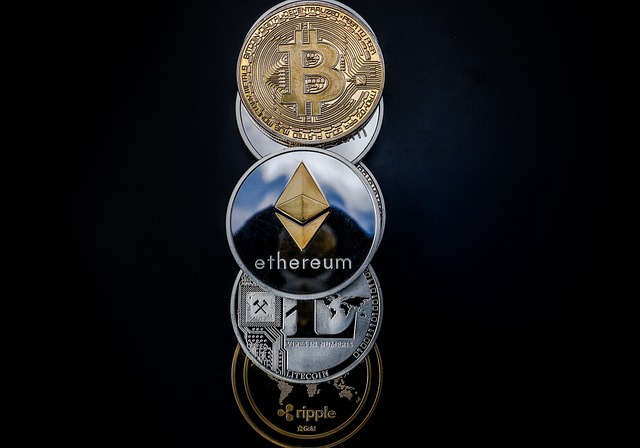In an era where digitalization is revolutionizing finance, cryptocurrencies like Ripple (XRP) are emerging as powerful tools for cross-border transactions. This article delves into the intricacies of Ripple, its technology, and its role in facilitating cross-border cryptocurrency transactions. Additionally, Cryptocurrency Trading has become an integral part of this transformative landscape, making it essential to explore innovative solutions for staying at the forefront of the evolving financial ecosystem.
Understanding Ripple: The Basics
What is Ripple (XRP)?
Ripple, established in 2012, is not your typical cryptocurrency. Unlike Bitcoin or Ethereum, Ripple doesn’t rely on a blockchain for consensus. Instead, it employs a unique distributed ledger technology known as the Ripple Protocol Consensus Algorithm (RPCA). This distinction sets Ripple apart as it offers enhanced speed and efficiency for cross-border payments.
How Ripple Differs
Ripple’s primary objective is to expedite cross-border payments. While Bitcoin and Ethereum aim for decentralization and a variety of use cases, Ripple has a more specific focus. It doesn’t rely on mining, making it more eco-friendly, and its consensus mechanism ensures near-instant transactions.
Ripple’s Role in Cross-Border Transactions
Ripple functions as a bridge currency, connecting various fiat currencies worldwide. Its digital asset, XRP, plays a pivotal role in this process by acting as a bridge, allowing seamless conversion between different currencies.
The Ripple Network: RippleNet
Exploring the RippleNet Ecosystem
RippleNet is a global network that includes banks, financial institutions, payment providers, and more. Participants in RippleNet can leverage its benefits, such as real-time settlement and reduced costs. By facilitating direct peer-to-peer transactions, it eliminates the need for intermediaries.
Fast and Cost-Effective Transactions
RippleNet’s decentralized structure and XRP’s liquidity enable participants to send cross-border payments swiftly and affordably. Traditional international transfers can take days and incur hefty fees, but RippleNet slashes both time and cost.
Real-World Examples
Prominent institutions like Santander and American Express have adopted RippleNet. These partnerships demonstrate the practicality and appeal of Ripple’s solutions in the financial sector.
XRP as a Digital Asset
Dual Nature of XRP
XRP serves a dual purpose: a digital currency for everyday transactions and a bridge asset for cross-border payments. Its versatility contributes to Ripple’s effectiveness in the global financial ecosystem.
Value Proposition
XRP’s speed and cost-effectiveness make it a compelling choice for cross-border payments. It offers an alternative to traditional correspondent banking, reducing settlement times from days to seconds.
Liquidity and Market Dynamics
XRP’s liquidity is crucial to its functionality. The token’s liquidity is continually improving, making it a more attractive option for financial institutions seeking to optimize cross-border transactions.
Regulatory Challenges and Compliance
Global Regulatory Landscape
Cryptocurrencies face a complex regulatory landscape worldwide. Ripple has grappled with regulatory scrutiny, particularly in the United States, as authorities debate whether XRP should be classified as a security.
Legal Battles with the SEC
In late 2020, the SEC filed a lawsuit against Ripple Labs, alleging that XRP was an unregistered security. This legal battle has significant implications for Ripple’s growth and the broader cryptocurrency industry’s regulatory future.
Impact on Expansion
Regulatory challenges can impede Ripple’s expansion and adoption by financial institutions. Clarity and regulatory compliance are essential for Ripple to navigate these challenges successfully.
Use Cases and Partnerships
Ripple’s Key Partnerships
Ripple has forged partnerships with prominent financial institutions, including Standard Chartered and SBI Holdings. These partnerships demonstrate Ripple’s commitment to revolutionizing cross-border finance.
Beyond Cross-Border Payments
While Ripple’s primary focus is cross-border transactions, its technology has applications beyond payments. Ripple’s Interledger Protocol (ILP) enables micropayments and other use cases, enhancing its versatility.
Financial Inclusion
Ripple’s technology is instrumental in promoting financial inclusion in underserved regions. By lowering transaction costs and increasing accessibility, it empowers individuals and businesses in areas with limited access to traditional banking services.
Future Prospects and Challenges
Potential Evolution of Ripple
As Ripple continues to innovate and adapt to regulatory changes, its role in the global financial landscape may expand. The adoption of RippleNet and XRP could become more widespread, further revolutionizing cross-border payments.
Competition in the Space
Ripple faces competition from other cross-border payment solutions like Stellar (XLM) and SWIFT’s gpi. The competition drives innovation and underscores the need for Ripple to stay at the forefront of the industry.
Environmental Concerns
Ripple’s consensus mechanism is energy-efficient compared to proof-of-work blockchains like Bitcoin. However, environmental concerns are growing within the cryptocurrency industry, prompting Ripple to address sustainability and energy consumption concerns.
Conclusion
In conclusion, Ripple’s impact on cross-border cryptocurrency transactions cannot be overstated. Its unique technology, RippleNet ecosystem, and XRP’s dual role make it a formidable contender in the global financial arena. Regulatory challenges and competition persist, but Ripple’s continued innovation and commitment to financial inclusion position it as a transformative force in the expansive waters of cross-border cryptocurrency.

0 Comments